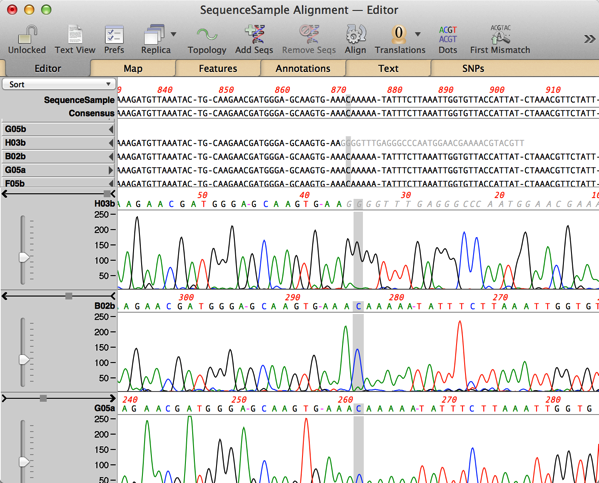
The details of microarray results including the image file (CEL files), base-calling file (CHP) and the final called base sequence (txt files) of each microarray are available at ArrayExpress ( ) under the accession number E-MTAB-10008 for the resequencing of the Ebola glycoprotein gene inserted into Vesicular Stomatitis Virus. The raw Illumina NGS reads and the assembled consensus sequence are available at ArrayExpress ( ) with the accession number E-MTAB-10102. The details of microarray results including the image file (CEL files), base-calling file (CHP) and the final called base sequence (txt files) of each microarray are available at ArrayExpress ( ) under the accession number E-MTAB-10007 for the Ebola genome resequencing.

The work is made available under the Creative Commons CC0 public domain dedication.ĭata Availability: The complete description of the microarray is available at ArrayExpress ( ) with the accession number A-MTAB-670.
#Alignment in macvector free
This is an open access article, free of all copyright, and may be freely reproduced, distributed, transmitted, modified, built upon, or otherwise used by anyone for any lawful purpose. Received: JAccepted: JanuPublished: February 10, 2022 PLoS ONE 17(2):Įditor: Jishnu Das, University of Pittsburgh, UNITED STATES (2022) Tracking ebolavirus genomic drift with a resequencing microarray. Comparison of the Ebolavirus-RMA results to the Genbank database sequence file with the accession number given for the source RNA and Ebolavirus-RMA results compared to Next Generation Sequence results of the same RNA samples showed up to 99% agreement.Ĭitation: Tiper I, Kourout M, Fisher C, Konduru K, Purkayastha A, Kaplan G, et al. The ability of the system to identify genetic drift in a replicating virus was achieved by sequencing the ebolavirus glycoprotein gene in a recombinant virus cultured under pressure from a neutralizing antibody. The design of the Ebolavirus-RMA system is described and evaluated by sequencing repository samples of three Ebolaviruses and two EBOV variants. This study presents the design and initial evaluation of an ebolavirus resequencing microarray (Ebolavirus-RMA) system for sequencing the major genomic regions of four Ebolaviruses that cause disease in humans.

Resequencing microarrays (RMA) are a targeted method to obtain genomic sequence on clinical specimens rapidly, and sensitively, overcoming the need for extensive bioinformatic analysis. However, field-deployable sequencing methods are needed to enable a rapid public health response. In 2018, early sequence identification of the Ebolavirus as EBOV in the Democratic Republic of the Congo supported the use of an Ebola virus vaccine. During the 2013–2016 Ebola virus outbreak, genome sequencing allowed the study of virus evolution, mutations affecting pathogenicity and infectivity, and tracing the viral spread. Filoviruses are emerging pathogens that cause acute fever with high fatality rate and present a global public health threat.


 0 kommentar(er)
0 kommentar(er)
